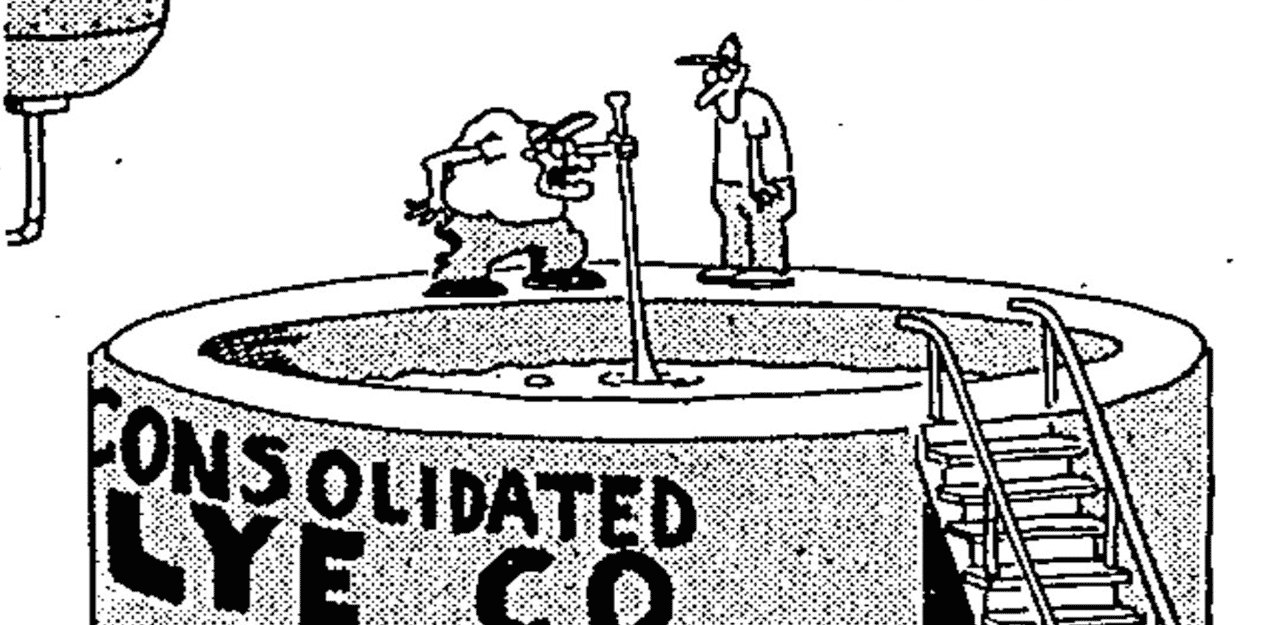“New guy, huh? Well, up here, we walk the edge! And the edge is a fickle hellcat…love her, but never trust her, for her heart is full of LYE!” That quote comes from one of my favorite panels of The Far Side. In the scene, an old-timer is speaking to a new factory worker as they both stand on the edge of a huge vat of Lye.
I’ve been designing and building websites for well over 10 years now, and while many aspects of our industry change daily, a lot things remain the same. One of those things is our fixation with the edge. We all want to be the very first kid on our block to do some fancy canvas animation, pioneer a new UI pattern or deploy a site with as much HTML5 and CSS3 as we can possibly cram into it. Why? Because it’s uncharted territory, it keeps us interested and earns us kudos from our colleagues. In short, it’s fun to play on the edge!
I love experimenting with shiny new browser features and day-dreaming about life without IE7. Knowing what’s going on up there means I’ll be ready when beta techniques become ready for prime time. From a practical standpoint though, we have to come down from the edge to do our day-to-day web construction work as many of the latest technologies aren’t quite ready for real client projects or mainstream applications.
This morning, a friend pointed me to a blog post titled, “IE9 is the IE6 of CSS3“. I’ll spare you the read by saying that the entire post is a one-sided emotional rant about how IE9’s CSS3 rendering falls short of the latest version of all other browsers. The author of that post is not alone; I’ve seen a growing number of contentious articles and tweets taking cheap shots at the IE9 beta. I’ve certainly posted plenty of public complaints about IE in the past, but to me, IE9 represents a huge leap forward from IE8, just as IE7 did before that and IE6 did back when I was attempting to build CSS layouts that worked in IE5.5 and Netscape 4. Yes, Microsoft is slower than the other browser vendors, but progress is progress.
In my opinion, anyone focusing on IE9’s shortcomings has spent way too much time up on the edge, or maybe fell into the lye. While browser usage statistics vary quite a bit depending on the traffic source, let me give you a little shot of data that’ll bring you back down to planet earth.
Top 15 Browsers – 9/2010
| Internet Explorer 8 | 29.06% |
| Firefox 3.6 | 17.05% |
| Internet Explorer 6 | 15.55% |
| Internet Explorer 7 | 10.39% |
| Chrome 6 | 5.05% |
| Firefox 3.5 | 3.23% |
| IE8 Compatibility Mode | 2.69% |
| Safari 5 | 2.44% |
| Chrome 5 | 2.44% |
| Opera 10 | 2.06% |
| Firefox 3.0 | 1.94% |
| Safari 4.0 | 1.83% |
| Netscape 6.0 | 0.46% |
| Firefox 2.0 | 0.38% |
| Opera Mini 4.1 | 0.35% |
Source: NetMarketShare
I know a lot of people have already given IE6 the boot, but if NetMarketShare’s stats are to be believed, that single, obsolete version of Internet Explorer still claims more of the market share than all webkit-based browsers combined. To be fair, I agree that dropping support for IE6 is the only way we’re going to push corporate IT departments to upgrade their users and finally kill that beast for good. But even if our lowest common denominator is IE7, the feature set of IE9 still makes me jump for joy. Perhaps I’m a bit like the old timer from that Far Side comic. I’ll always walk the edge and I’ll always love it. If I hear another whipper snapper complain though, I’ll whack ’em with my cane and bore them with worn out stories about how I built table layouts with spacer gifs and wrote entirely different markup for print while walking up hill both ways in the snow. That oughta shut ’em up. Now get off my lawn!

I’ve seen so much buzz about that post lately but have avoided reading it because honestly, sometimes we have too much buzz. Thanks for the extreme Reader’s Digest version. 🙂
It’s interesting that IE6 holds a greater market share than IE7. Although I suppose you could really bundle IE7 and 8 together in comparison to 6, so in that case, it’s way less.
Other stat sources (there are a few listed on wikipedia) put IE6 closer to around 6% with IE7 being slightly higher. No matter what source you look at though, both 6 and 7 are dropping quickly, which makes me very happy.
To Jason’s point, a few countries with very high IE6 share skew the worldwide statistics. NetApps reports 50% IE6 share in China, for instance. In most of Europe and US, it has less than 5% share.
I actually think Gary Larson is talking about marriage. The old, crumpled up man has been married for many years (maybe Larson’s Uncle or someone?) and has lots of stories and lots of advice on not getting married. The young, new guy is ready to jump into the marriage pool so to speak.
If this is true, it has to be one of Larson’s most ingenious cartoons because he uses an allegory to explain his idea.